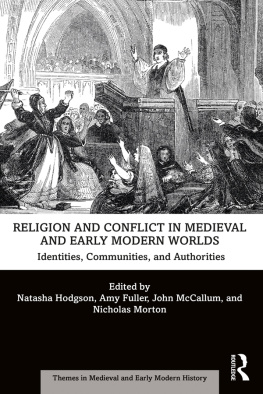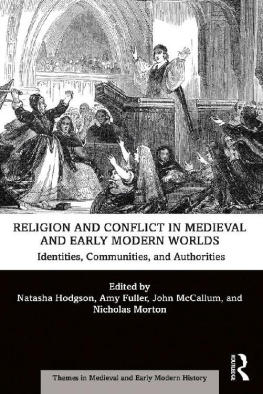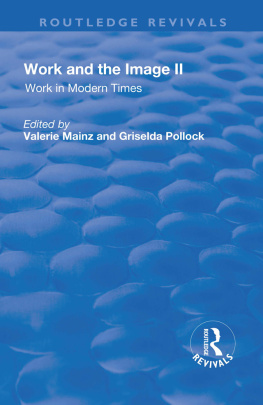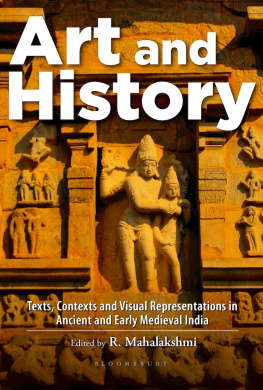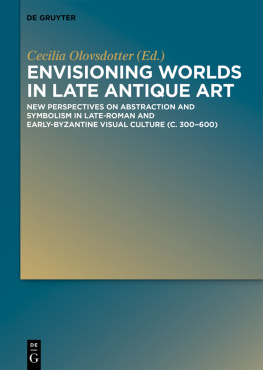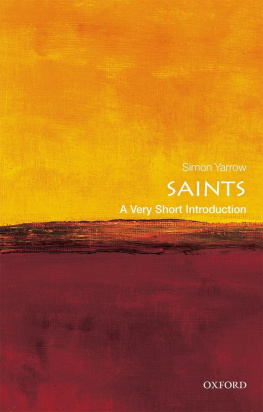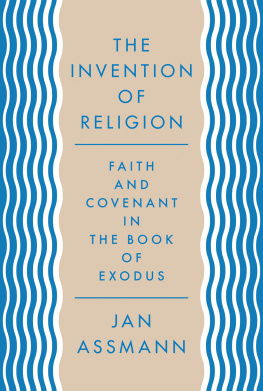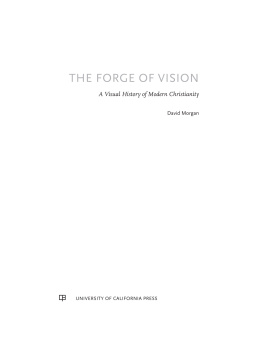
Exploring Aniconism
This book explores the phenomenon of aniconismthe denotation of the presence of gods, saints, or spiritual forces using non-figural visual markers that do not resemble these supranatural entities.
The contributors show how various types of aniconism differ in how they mediate divinepresence and relate to other modes of representation. Aniconism is rarely absolute; eachaniconic form needs to be considered within a spectrum of visual modes ranging from theabstract to the anthropomorphic. The chapters examine aniconism in paleolithic cultures;in ancient Egypt, Israel, and Greece; in early Christianity and Islam; in medieval and contemporaryHinduism; and in 17th19th-century Scottish-Gaelic contexts. The volume alsoprovides a critical historiography of aniconism as an academic concept, a new fine-tunedterminology, and some general characteristics of aniconic expressions in the context of thebroader field of material religion.
Offering a multi-faceted discussion of this important category of religious material culture, this book will be of interest to those with an interest in aniconism, as well as those involved in the wider study of how religion intersects with art and anthropology.
This book was originally published as a special issue of the Religion journal.
Mikael Aktor is an Associate Professor in Studies of Religions at the University of Southern Denmark, Odense, Denmark. His publications include Object of Worship in South Asian Religions (with Knuth Jacobsen and Kristina Myrvold, 2015). His other research area is the study of ancient and medieval Hindu law.
Milette Gaifman is an Associate Professor in Classics and History of Arts at Yale University, New Haven, USA. Her publications include Aniconism in Greek Antiquity (2012), The Art of Libation in Classical Athens (2018), and The Embodied Object in Classical Art, a special issue of Art History (co-edited with Verity Platt and Michael Squire, 2018).
Exploring Aniconism
Edited by
Mikael Aktor and Milette Gaifman
First published 2020
by Routledge
2 Park Square, Milton Park, Abingdon, Oxon, OX14 4RN
and by Routledge
52 Vanderbilt Avenue, New York, NY 10017
Routledge is an imprint of the Taylor & Francis Group, an informa business
2020 Taylor & Francis
All rights reserved. No part of this book may be reprinted or reproduced or utilised in any form or by any electronic, mechanical, or other means, now known or hereafter invented, including photocopying and recording, or in any information storage or retrieval system, without permission in writing from the publishers.
Trademark notice: Product or corporate names may be trademarks or registered trademarks, and are used only for identification and explanation without intent to infringe.
British Library Cataloguing-in-Publication Data
A catalogue record for this book is available from the British Library
ISBN13: 978-0-367-35776-4
Typeset in Minion Pro
by codeMantra
Publishers Note
The publisher accepts responsibility for any inconsistencies that may have arisen during the conversion of this book from journal articles to book chapters, namely the inclusion of journal terminology.
Disclaimer
Every effort has been made to contact copyright holders for their permission to reprint material in this book. The publishers would be grateful to hear from any copyright holder who is not here acknowledged and will undertake to rectify any errors or omissions in future editions of this book.
Contents
Milette Gaifman
Robert G. Bednarik
Jrgen Podemann Srensen
Hans J. L. Jensen
Robin M. Jensen
Nadia Ali
Jay Johnston
Richard H. Davis
David L. Haberman
Mikael Aktor
The chapters in this book were originally published in Religion, volume 47, issue 3 (July 2017). When citing this material, please use the original page numbering for each article, as follows:
Chapter 1
Aniconism: definitions, examples and comparative perspectives
Milette Gaifman
Religion, volume 47, issue 3 (July 2017) pp. 335352
Chapter 2
Aniconism and the origins of palaeoart
Robert G. Bednarik
Religion, volume 47, issue 3 (July 2017) pp. 353365
Chapter 3
The real presence of Osiris: iconic, semi-iconic and aniconic ritual representations of an Egyptian god
Jrgen Podemann Srensen
Religion, volume 47, issue 3 (July 2017) pp. 366377
Chapter 4
Aniconic propaganda in the Hebrew Bible, or: the possible birth of religious seriousness
Hans J. L. Jensen
Religion, volume 47, issue 3 (July 2017) pp. 399407
Chapter 5
Aniconism in the first centuries of Christianity
Robin M. Jensen
Religion, volume 47, issue 3 (July 2017) pp. 408424
Chapter 6
The royal veil: early Islamic figural art and the Bilderverbot reconsidered
Nadia Ali
Religion, volume 47, issue 3 (July 2017) pp. 425444
Chapter 7
Stone-agency: sense, sight and magical efficacy in traditions of the Highlands and Islands of Scotland
Jay Johnston
Religion, volume 47, issue 3 (July 2017) pp. 445458
Chapter 8
ivas multiplicity of presence in aniconic and iconic form
Richard H. Davis
Religion, volume 47, issue 3 (July 2017) pp. 459482
Chapter 9
Drawing out the iconic in the aniconic: worship of neem trees and Govardhan stones in Northern India
David L. Haberman
Religion, volume 47, issue 3 (July 2017) pp. 483502
Chapter 10
The Hindu pacyatanapj in the aniconism spectrum
Mikael Aktor
Religion, volume 47, issue 3 (July 2017) pp. 503519
For any permission-related enquiries please visit:
http://www.tandfonline.com/page/help/permissions
Mikael Aktor is an Associate Professor in Studies of Religions at the University of Southern Denmark, Odense, Denmark. His other research area is the study of ancient and medieval Hindu law.
Nadia Ali is a Postdoctoral Researcher on the Empires of Faith project, jointly hosted by the British Museum and the University of Oxford, UK. Her research interests focus on the emergence of early Islamic art in the context of Late Antiquity.
Robert G. Bednarik is the Convener and Editor-in-Chief of the International Federation of Rock Art Organisations and is affiliated with the International Centre for Rock Art Dating (ICRAD) at Hebei Normal University, Shijiazhuang, China. His principal research interests are the origins of the human ability to create constructs of reality.
Richard H. Davis is a Professor in the Religion and Asian Studies Programs at Bard College, USA. Currently, he is continuing work on the reception history of the Bhagavad Gita and on a history of religions in early South Asia.
Milette Gaifman is an Associate Professor in Classics and History of Arts at Yale University, New Haven, USA. She is a scholar of ancient art and archaeology, focusing primarily on Greek art of the Archaic and Classical periods.


